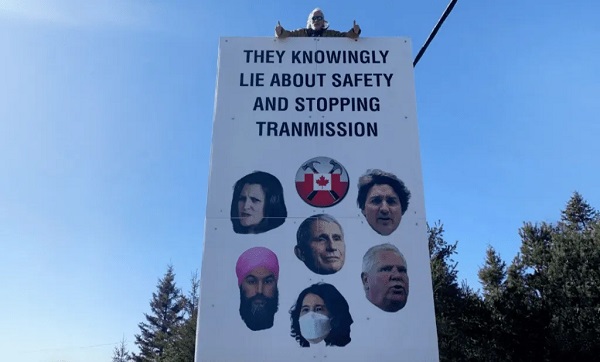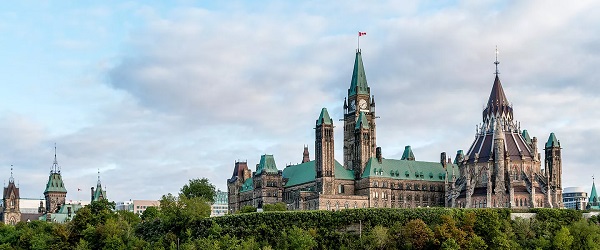National
Trudeau’s $9 Million Condo Scandal: Elites Party in New York While Canadians Struggle at Home
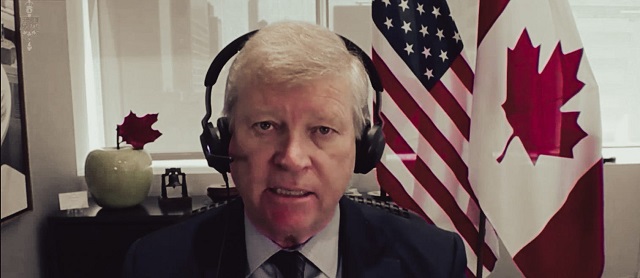
From The Opposition News Network
By Dan Knight
It’s no secret that Justin Trudeau and his Liberal cronies love to live large. But this latest scandal? It’s a new low, even for them. We’re talking about a $9 million luxury condo—yes, you heard that right—on Billionaire’s Row in New York City, bought for a Trudeau-appointed diplomat while millions of Canadians are barely scraping by.
What’s worse? Trudeau himself seems to be right at the heart of this.
Let’s break down the facts that emerged during Meeting No. 137 of the Standing Committee on Government Operations and Estimates (OGGO), and you’ll see exactly how Trudeau’s government, under the watchful eye of his loyal minister Mélanie Jolie, pulled this off.
The Timeline of Trudeau’s Elitist Condo Scheme:
1. February 2023: Tom Clark, a former journalist and long-time friend of the Liberal elites, is appointed by Trudeau’s government as Consul General in New York. A cozy appointment, no doubt, for someone with deep ties to the Liberal establishment.
2. April 27, 2023: The Prime Minister himself—yes, Justin Trudeau—drops by Clark’s old New York residence for a dinner. Imagine the wine flowing and the conversation going, all while the rest of Canada is dealing with a collapsing economy, skyrocketing inflation, and an ongoing housing crisis.
3. April 28, 2023: The very next day, Trudeau and Clark are seen together in a motorcade cruising the streets of New York City. What exactly were they discussing? A new condo perhaps? It’s hard to believe that this kind of luxury real estate plan wasn’t at least mentioned during their cozy ride.
4. Spring/Summer 2023: Global Affairs Canada—overseen by Trudeau’s trusted Minister Jolie—suddenly identifies problems with the old residence. That’s right, just a few months after Trudeau’s visit, the decision is made to start looking for a new, more luxurious residence. Coincidence? Hardly.
5. April 17, 2024: An email from Global Affairs states that Tom Clark was instrumental in giving the green light for the purchase of the $9 million condo. The deal is pushed through, and the taxpayer is stuck with the bill.
6. July 12, 2024: The media finally breaks the story about the purchase of the $9 million luxury condo on Billionaire’s Row, one of the most expensive neighborhoods in New York. Public outrage begins to grow as details about this opulent purchase come to light.
7. July 25, 2024: A bogus correction is issued by Global Affairs, claiming that Tom Clark was not involved in the purchase. Conveniently, this correction comes one day after this very committee ordered documents on Clark’s involvement. Sound fishy? It should.
Clark’s Cozy Deal and Trudeau’s Role
Here’s what we know: Trudeau’s government made a $9 million purchase for Tom Clark, a man with deep ties to the Liberals, shortly after Trudeau himself visited Clark’s old residence. Now, emails show Clark was directly involved in the decision to buy the new place, but when he appeared before the committee, he suddenly couldn’t remember any involvement. Instead, he passed the blame onto Global Affairs Canada.
Now, here’s where it gets worse. Documents show that Clark was instrumental in the decision to buy this opulent residence. Emails from within Minister Mélanie Joly’s own department reveal that Clark himself gave the “green light” on the purchase. But when Clark appeared before the committee, he suddenly had a case of selective amnesia, denying any involvement in the decision. According to him, it was all Global Affairs Canada’s doing. He claims he was just an innocent bystander, touring the property “out of curiosity.”
Are we really supposed to believe that? This is a man who, for decades, worked in media and is well-versed in how power operates. The idea that Clark wasn’t aware of the optics or didn’t say a word when shown this mansion is laughable. What’s even more convenient is that a “correction” from Global Affairs magically appeared one day after the committee requested documents about Clark’s involvement. They want us to believe that all of this is just a coincidence, a bureaucratic hiccup. Sure.
But let’s not forget who runs Global Affairs—none other than Minister Mélanie Jolie, one of Trudeau’s closest allies. Jolie has twice appointed Clark to key roles: once as head of an advisory committee recommending appointments to CBC, and then again as Consul General in New York. And it’s Jolie’s department that now seems to be covering for Clark in this scandal, issuing a correction that conveniently contradicts their own internal emails.
So, who’s responsible? The buck stops with Minister Jolie—and ultimately with Justin Trudeau.
The Real Problem: Trudeau’s Elitism and Out-of-Touch Government
While Tom Clark is now enjoying his luxurious $9 million condo—complete with swimming lanes, golf simulators, and some of the most expensive appliances money can buy—ordinary Canadians are lining up at food banks, barely making rent, and trying to survive in Trudeau’s broken economy.
Let’s break down just how absurd this situation is: for this $9 million palace, Clark pays a laughable $1,800 a month. Meanwhile, the actual cost of living in a place like that? Around $42,000 a month. The difference? You, the Canadian taxpayer, are picking up the tab for Clark’s personal playground while you struggle to pay your bills.
And let’s be clear: Clark wasn’t some innocent bystander in this. He toured the condo, saw the luxury, and didn’t once think to say, “Hey, maybe this is too much, especially when people back home can’t even afford to live.” Why? Because this is the Trudeau mindset. The elites deserve the best, and the rest of us? We can pay for it.
Why Jolie Must Testify
This scandal goes straight to the top. Mélanie Jolie must come before the committee and explain how her department managed to spend $9 million on a condo for one of Trudeau’s buddies. She needs to answer for the emails that say Clark was involved, even though they’re now trying to claim he wasn’t. And, most of all, she needs to explain why this government continues to indulge its inner circle while Canadians suffer.
It’s time for real accountability. Trudeau and his ministers cannot continue to dodge these scandals, pretending like they have no part in the decisions being made. Minister Jolie needs to testify, and the Canadian public deserves answers. After all, you’re the ones paying for it.
This isn’t just about one condo; it’s about a government that’s lost touch with reality, that believes it can spend your money however it likes, with no consequences. The Liberals claim to care about the middle class, but when it comes down to it, they’re more interested in living large—and making sure their friends do too.
Minister Jolie, it’s time to step up and explain why you let this happen. Canadians are watching.
You can subscribe for free to The Opposition with Dan Knight, but for the full experience, you’ll need to upgrade your subscription.
COVID-19
Top COVID doctor given one of Canada’s highest honors
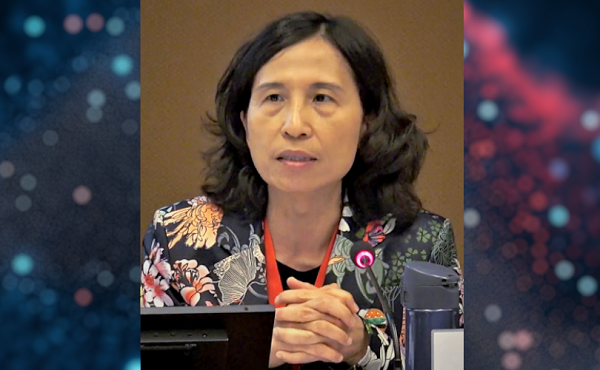
From LifeSiteNews
Dr. Theresa Tam received the Order of Canada for her controversial COVID-19 response as the nation’s chief public health officer.
Canada’s former top medical advisor, known for her promotion of masking and COVID vaccines, has received one of Canada’s highest honors.
On June 30, Governor General Mary Simon awarded Dr. Theresa Tam, Canada’s former Chief Public Health Officer (CPHO), the Order of Canada award for her work implementing dangerous COVID regulations, including masking and experimental COVID shots.
“For decades, Theresa Tam has striven to advance global and national public health as a pediatric infectious disease specialist and public servant,” the press release read.
“Her tenure as Canada’s chief public health officer has been characterized by her commitment to health equity and highlighted by her leadership role in the country’s response to the COVID-19 pandemic,” it continued.
The award, given to Canadians who have made extraordinary contributions to the nation, is Canada’s second-highest civilian honor.
Tam’s reception of the award comes just weeks after she stepped down as CPHO, ending her eight-year tenure in the position.
In the early months of 2020, Tam became well-known by Canadians for leading the country’s response to the COVID “pandemic” and pushing arbitrary and dangerous regulations.
Initially, Tam assured Canadians that masking was unnecessary, ineffective, and could even pose health threats.
However, shortly after, Tam changed her policy, telling Canadians that they should even wear masks during sex, a practice which has not been proven to be effective in preventing the spread of COVID and can cause myriad health issues.
Additionally, Tam promoted experimental COVID vaccines for Canadians as young as six months old despite having no long-term studies on its effects and an extensive amount of research proving the dangers of the experimental COVID mRNA jabs that include heart damage and blood clots.
In 2022, after thousands of Canadians reported adverse effects from the vaccine, Tam announced that the federal government was reviewing all federal COVID vaccine mandates, claiming that Canada’s Public Health Agency has never outright endorsed mandatory vaccination.
Tam’s remarks come after more than 1,000 federal workers have been suspended without pay because they chose not to get the COVID jabs or disclose whether they had them per the Privacy Act.
The Order of Canada was also awarded to British Columbia Provincial Health Officer Bonnie Henry, who is known not only for her heavy-handed COVID response, but also for promoting drug use throughout the province.
In 2023, hundreds of British Columbia health care workers sued Henry for ongoing COVID shot mandates preventing them from working. Under Henry, vaccine passports were implemented which required residents to show digital proof of vaccination to enter gyms, restaurants, and other “non-essential” facilities.
Henry also pushed the experimental and dangerous vaccine on children as young as five, despite that fact that clinical trials would not be completed for another two years.
Additionally, in 2024, Henry recommended that British Columbia expand its “safe supply” program to legalize fentanyl and heroin, despite evidence that the program is not working and has worsened the provinces drug crises.
Energy
If Canada Wants to be the World’s Energy Partner, We Need to Act Like It

Photo by David Bloom / Postmedia file
From Energy Now
By Gary Mar
With the Trans Mountain Expansion online, we have new access to Pacific markets and Asia has responded, with China now a top buyer of Canadian crude.
The world is short on reliable energy and long on instability. Tankers edge through choke points like the Strait of Hormuz. Wars threaten pipelines and power grids. Markets flinch with every headline. As authoritarian regimes rattle sabres and weaponize supply chains, the global appetite for energy from stable, democratic, responsible producers has never been greater.
Canada checks every box: vast reserves, rigorous environmental standards, rule of law and a commitment to Indigenous partnership. We should be leading the race, but instead we’ve effectively tied our own shoelaces together.
In 2024, Canada set new records for oil production and exports. Alberta alone pumped nearly 1.5 billion barrels, a 4.5 per cent increase over 2023. With the Trans Mountain Expansion (TMX) online, we have new access to Pacific markets and Asia has responded, with China now a top buyer of Canadian crude.
The bad news is that we’re limiting where energy can leave the country. Bill C-48, the so-called tanker ban, prohibits tankers carrying over 12,500 tons of crude oil from stopping or unloading crude at ports or marine installations along B.C.’s northern coast. That includes Kitimat and Prince Rupert, two ports with strategic access to Indo-Pacific markets. Yes, we must do all we can to mitigate risks to Canada’s coastlines, but this should be balanced against a need to reduce our reliance on trade with the U.S. and increase our access to global markets.
Add to that the Impact Assessment Act (IAA) which was designed in part to shorten approval times and add certainty about how long the process would take. It has not had that effect and it’s scaring off investment. Business confidence in Canada has dropped to pandemic-era lows, due in part to unpredictable rules.
At a time when Canada is facing a modest recession and needs to attract private capital, we’ve made building trade infrastructure feel like trying to drive a snowplow through molasses.
What’s needed isn’t revolutionary, just practical. A start would be to maximize the amount of crude transported through the Trans Mountain Expansion pipeline, which ran at 77 per cent capacity in 2024. Under-utilization is attributed to a variety of factors, one of which is higher tolls being charged to producers.
Canada also needs to overhaul the IAA and create a review system that’s fast, clear and focused on accountability, not red tape. Investors need to know where the goalposts are. And, while we are making recommendations, strategic ports like Prince Rupert should be able to participate in global energy trade under the same high safety standards used elsewhere in Canada.
Canada needs a national approach to energy exporting. A 10-year projects and partnerships plan would give governments, Indigenous nations and industry a common direction. This could be coupled with the development of a category of “strategic export infrastructure” to prioritize trade-enabling projects and move them through approvals faster.
Of course, none of this can take place without bringing Indigenous partners into the planning process. A dedicated federal mechanism should be put in place to streamline and strengthen Indigenous consultation for major trade infrastructure, ensuring the process is both faster and fairer and that Indigenous equity options are built in from the start.
None of this is about blocking the energy transition. It’s about bridging it. Until we invent, build and scale the clean technologies of tomorrow, responsibly produced oil and gas will remain part of the mix. The only question is who will supply it.
Canada is the most stable of the world’s top oil producers, but we are a puzzle to the rest of the world, which doesn’t understand why we can’t get more of our oil and natural gas to market. In recent years, Norway and the U.S. have increased crude oil production. Notably, the U.S. also increased its natural gas exports through the construction of new LNG export terminals, which have helped supply European allies seeking to reduce their reliance on Russian natural gas.
Canada could be the bridge between demand and security, but if we want to be the world’s go-to energy partner, we need to act like it. That means building faster, regulating smarter and treating trade infrastructure like the strategic asset it is.
The world is watching. The opportunity is now. Let’s not waste it.
Gary Mar is president and CEO of the Canada West Foundation
-
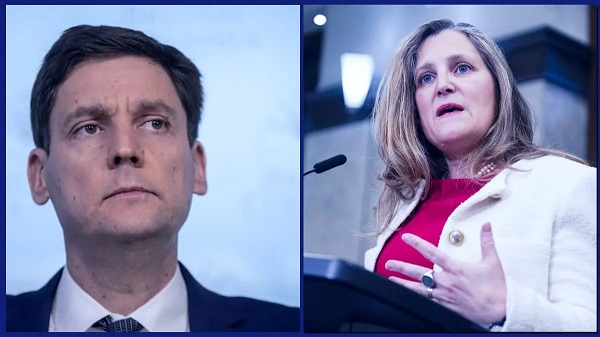
 Business1 day ago
Business1 day agoOttawa Funded the China Ferry Deal—Then Pretended to Oppose It
-

 COVID-192 days ago
COVID-192 days agoNew Peer-Reviewed Study Affirms COVID Vaccines Reduce Fertility
-

 MAiD2 days ago
MAiD2 days agoCanada’s euthanasia regime is not health care, but a death machine for the unwanted
-
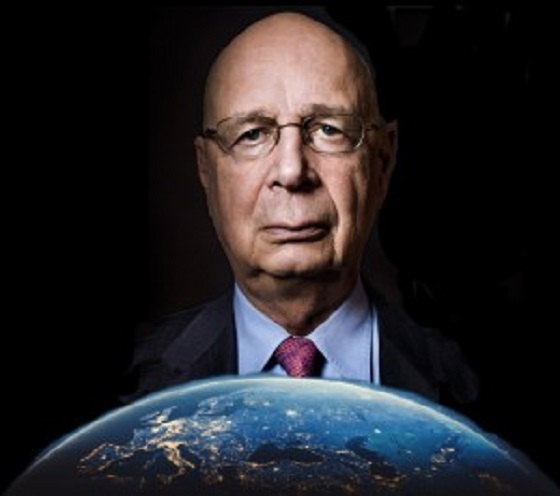
 Business1 day ago
Business1 day agoWorld Economic Forum Aims to Repair Relations with Schwab
-
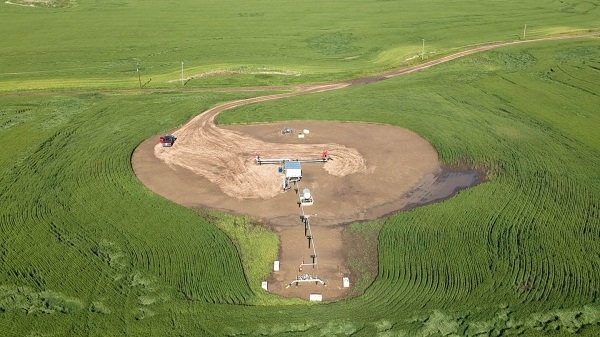
 Alberta2 days ago
Alberta2 days agoThe permanent CO2 storage site at the end of the Alberta Carbon Trunk Line is just getting started
-
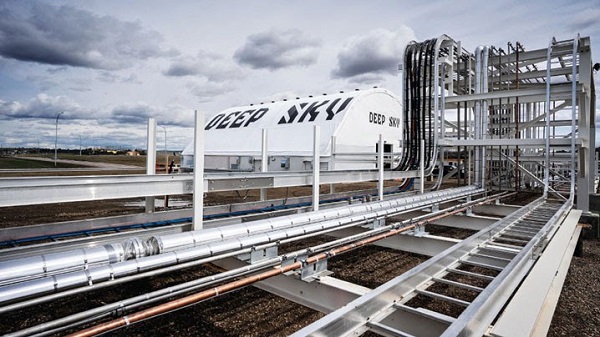
 Alberta1 day ago
Alberta1 day agoAlberta’s government is investing $5 million to help launch the world’s first direct air capture centre at Innisfail
-
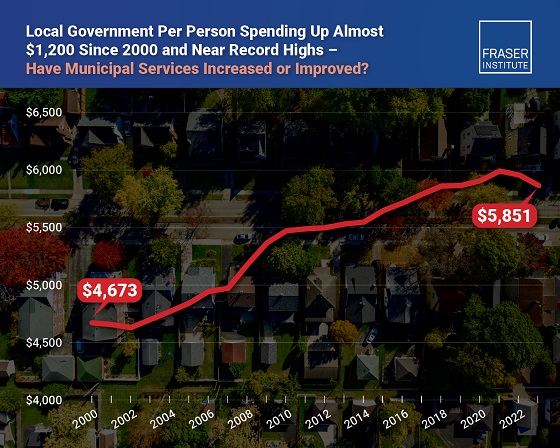
 Business2 days ago
Business2 days agoMunicipal government per-person spending in Canada hit near record levels
-
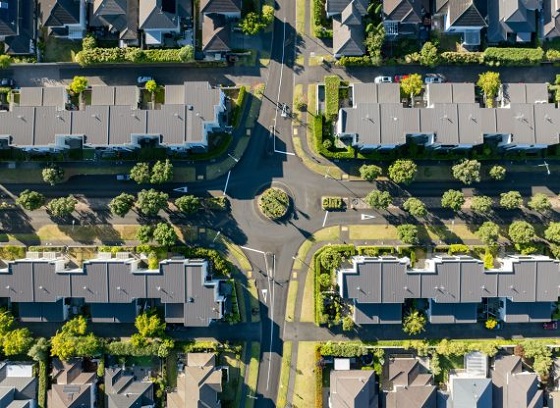
 Business1 day ago
Business1 day agoA new federal bureaucracy will not deliver the affordable housing Canadians need





